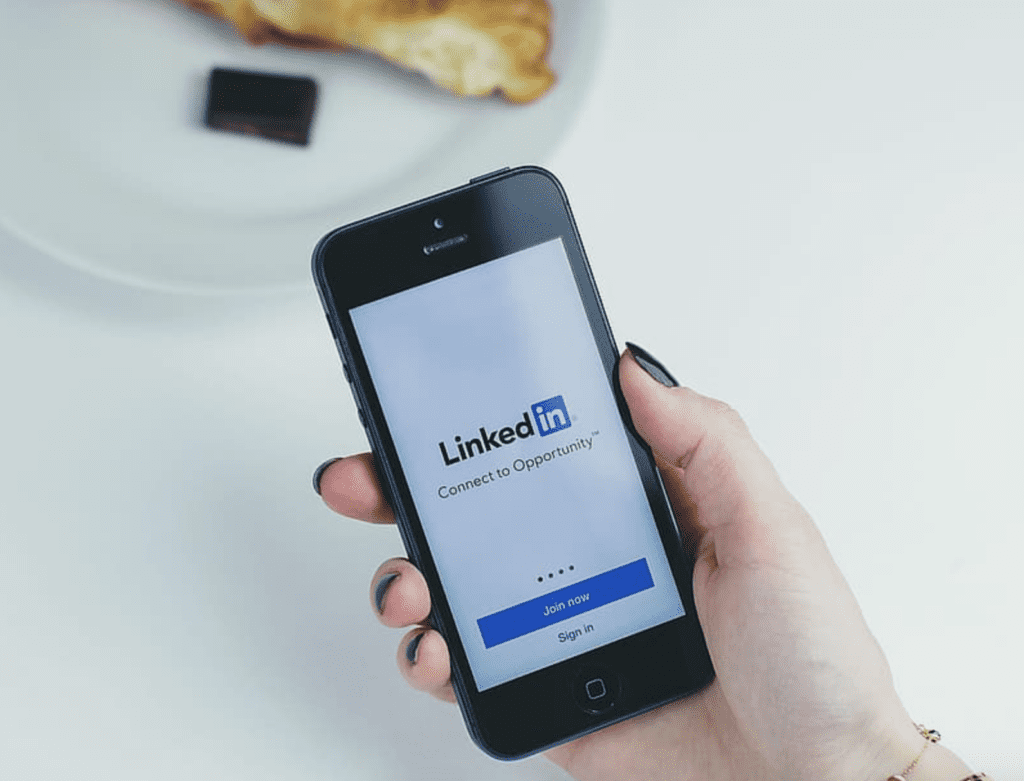Every two seconds, someone new joins LinkedIn.
Every new follower on LinkedIn is an opportunity for a broader audience. But how do you find and connect with these new professionals? When you learn how to amplify your brand on LinkedIn, you maximize your ability to meet people where they’re at and get more followers on your LinkedIn company page.
But, many businesses struggle with (virtual) connection. That’s because, in the digital age, authenticity is a sort of unicorn; too many companies are stuck focusing on other seemingly more important tasks, and developing a social media strategy becomes something that can be done another day, month, or year.
Simply put, social media is not a priority for many internal teams because for many of us, translating followers or connections to dollars and cents can be a seemingly impossible task.
WAnt more? Read our 10 tips for improving your social media profiles for business or personal
The truth is: Brand awareness lets your audience know who you are, what you’re good at, and what you stand for. Getting more followers on your LinkedIn company page (or any social media platform for that matter) is an excellent way to amplify your brand and generate more authentic brand awareness.
But actually making that happen can be a challenge. Tha’s why our experts came up with these top 5 ways to amplify your brand on LinkedIn:
- Leverage your employees
- Deliver real value to your followers
- Engage with your audience (and target audience)
- Diversify your content
- Analyze your analytics
Ready to dive in? Let’s do it.
Top 5 Ways to Amplify Your Brand on LinkedIn
Leverage your employees
If you’re doing it right, your employees should be your strongest allies.
While you technically don’t pay your employees to like you, you can ask them to virtually like you—on social media that is. One way you can do that is to ask them to include your company name in their portfolio. Once your employees add you to their LinkedIn profiles, they will automatically be added to your followers list. From there, you simply need to post content that they want to engage with and share with their followers.
Think of it like the Six Degrees of Kevin Bacon. If one of your employees shares one of your posts, at some point Kevin Bacon will see it on his timeline. That’s how it works right? Kevin Bacon definitely has a LinkedIn … right?
Encourage them to join (and participate) in LinkedIn Groups
For greater reach, you can also ask your employees to join LinkedIn Groups that are relevant to your industry, either nationally or locally. By entering these small communities of like-minded individuals, your employees are likely to make new connections, grow their skills, and create awareness for your brand.
Plus, if they engage regularly and say some really smart things, that in turn boosts your credibility as a company and helps amplify your brand on Linkedin.
Deliver real value to your followers
According to the 2017 Edelman Trust Barometer, 62% of people trust a brand’s social media more than its advertising. If you’re using your social media as an extension of your marketing … you’re doing it wrong. You should be delivering real value to your followers every day (maybe even 2-3x per day if you have the capacity for it) and, unfortunately, advertising disguised as social media just isn’t going to cut it.
A good rule of thumb for creating a content calendar for LinkedIn is 4-1-1: for every 1 piece of branded or self-serving content (content that is designed to specifically promote your offering and brand), repost 1 update from another source, and post 4 types of educational materials.
The educational materials can be from your own site (as long as they’re not self-serving, like above), but most of the time our personal blogs don’t have enough information or content to rely on solely for posting. For that reason, these 4 types of educational materials usually consist of content from other sites and blogs that are relevant to your audience’s interests.
“But MAKE Digital Group, why would I share other content when I pay someone perfectly capable and amazing to write content for me, like your copywriter Taylor who is the smartest and most talented person we know?”*
(*editor’s note: Taylor wrote this piece of content for MAKE)
We’ll tell you why: Because, at the end of the day, your goal is to deliver *real* value to your followers. And when you get down to the nitty-gritty of the matter, real value isn’t yet another boring post about your services—it’s pieces of valuable and helpful content that helps them become just a little bit smarter about whatever niche you’re in. And, surprisingly, people other than Taylor write excellent and informative content too.
While these articles and case studies may not directly correlate to your specific services, it will help them associate your brand with critical traits like informative and useful, and help amplify your brand on LinkedIn even more.
Engage with your audience (and target audience)
There’s a reason it’s called *social* media. If people are commenting on your posts with questions, insights, or simply a thumbs up, it is absolutely crucial that you acknowledge that. Not only does it make your followers feel seen virtually, but it also encourages more people to engage and post as well.
Here are a few tips for how to engage your followers on Linkedin:
Include questions
Not getting the engagement you want to see? That’s probably because you’re using your platform as a one-way street.
While social media is a great way to reach a massive audience and spam them with the unique benefits of working with you, it’s not exactly the point. It’s like going on a first date where the person only talks about themselves: Do you leave feeling like you want to have another conversation with them? Or do you feel like maybe your time is better spent elsewhere? Your followers will ask themselves that same question when they follow you.
Pose questions to your followers to start a conversation. Make them feel like you want to talk to them, that your sole reason for having a LinkedIn is to connect with them. Too many marketers use social media as a means to an end. Don’t be like those marketers.
Follow hashtags
No, hashtags are not dead. Yes, they can be annoying. But when done correctly, hashtags are an effective way to insert yourself into a topic or conversation that you may have otherwise missed out on. This in turn allows you to truly amplify your brand on Linkedin and reach a wider audience while promoting your knowledge and expertise.
For example, one of our clients is an IRA custodian. We follow a variety of hashtags from this industry, from #retirementplanning, which has nearly 14,000 followers, to a more specific hashtag of #selfdirectedIRA, which only has 74 followers.
Broad hashtags are helpful for staying up-to-date with the conversations happening around you (and in turn, connecting with potential customers who are interested in the same topics) while more specific hashtags are better for really driving home your expertise and unique services.
Diversify your content
LinkedIn is an interesting social media platform when it comes to what works and what doesn’t. There are so many different strategies for LinkedIn, but the one that seems to work the best is whatever feels organic and natural to you.
But, don’t confuse authenticity with rudimentary. Your personal Linkedin profile and your company profile should have a different brand, voice, and approach to all content.
Personal accounts
For example: If you’re a business owner, speaking directly to your followers is usually a bit more casual and will garner more conversations and engagement. On other platforms, longer posts often deter people from engaging or reading, whereas on LinkedIn, it can be the opposite.
Company profiles
For businesses, more high-level stats and facts are usually a great option. LinkedIn is a place where most people are on their best, most professional behavior, and are always looking to make a great impression.
As a business, posting smart content can encourage people to engage with it and try to boost their reputation alongside yours.
Here’s a rundown of the best types of content to post on your company’s LinkedIn profile:
- Statistics (or even better: graphics/images with statistics)
- Case studies
- Videos (it’s 2020 … videos are crucial to your marketing strategy)
- Product or service launches
- Employee features (make sure to tag the employee!)
- Industry leaders in your community
- Polls or questionnaires
- New or repurposed blog content
Sticking with just one type of content is only going to attract just one type of person. And more likely than not, your business is going to be targeting more than just one type of professional.
Using MAKE Digital Group as an example, we want our content to reach current and aspiring content creators, graphic designers, and web developers—but we also want to engage with potential customers and brands from a vast array of industries. Proving our expertise through in-depth case studies while throwing in fun employee features and engaging polls gives us the ability to maximize your reach, while still staying true to ourselves.
In short: Diversifying your LinkedIn content provides you with the ability to reach more significant audiences with tailored and relevant content that fits their needs. Figuring out how to do it in a way that is authentic to your brand voice is the real challenge.
Analyze your analytics
Your analytics will be the guiding force in helping you understand if your brand voice is authentic, and if people are engaging with your brand the way you want them to.
Luckily, LinkedIn offers a wide variety of analytics and tools designed to help you understand exactly what’s working (and what’s not) when it comes to your quest to amplify your brand on LinkedIn.
What LinkedIn analytics to track
Ultimately, which LinkedIn analytics you should track depends on what goals you’ve set for your social media marketing team. If you’re not sure where to start, here are a few you should add to your analytics arsenal.
Visitors
How many people are visiting your page every day, week, and month. This will provide useful insight into how your brand is performing and how your posts are converting.
In the visitor’s section, you should also take note of:
- Page views: Total number of views
- Unique visitors: Visits from users who haven’t been on your page before
- Visitor demographics: Explanation of who is visiting your page
Followers
Who is connected with your site. This metric will help you gauge how your brand awareness campaign is working, and if you’re gathering new followers through the process. This section also gives you information like:
- What other sites do your followers follow?
- Where are your followers from?
- What jobs do your followers hold?
- What industry are they in?
Engagement
What posts are performing well and which ones aren’t. Analyzing the most engaged posts will give you a more in-depth insight into the interests of your followers and how to amplify your brand on Linkedin.
Understanding engagement metrics will require a more hands-on approach. To truly understand why something is performing better, you’ll need to consider other factors like time of post, national or local holidays, industry events, and even that day’s weather forecast.
The bottom line
LinkedIn offers massive opportunities when it comes to brand awareness. But figuring out how to amplify your brand on LinkedIn takes a lot of time, effort, and insights. If your team is too overworked to MAKE it happen, consider hiring ours to help.
Book a free strategy session to learn more about what we offer and how we can help you get more LinkedIn followers on your company page.





